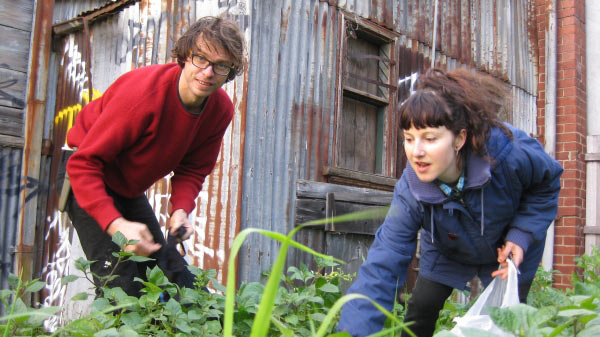VEG’s Jeremy is running the Understanding Weather course again this year (2020) so we sat him down for a chat to find what this is all about. Well, when we say “we”, he interviewed himself… which got a bit weird, so we’ve transcribed the (tastefully edited) audio and voilà – read on below!
VEG: Hi JP, thanks for sitting still long enough for a chat.
JP: My pleasure. Nice hat, BTW.
VEG: Thanks, I have a few. Right, so let’s talk weather!
JP: Excellent!
VEG: The course name says Understanding Weather – what’s it about?
JP: Ummm… exactly that. Learning how to identify patterns in the weather, unpacking the science around how they work, utilising tools like synoptic charts and the awesome Windy website/app, all to understand more about why the weather is the way it is, and what that means for our lived experience, day to day.
VEG: Say I’m reading this on my phone while waiting for my coffee to be made – convince me why this course is a thing, and if I should keep reading
JP: Ok, so if you’ve ever wondered: does Melbourne actually have terrible weather, and why you can experience a hailstorm on a 40C day? Do trees make rain, and what do Solstice and Equinox really mean, or why does Daylesford have higher annual rainfall than Castlemaine? Or “can I learn to tell if it’s going to rain just by looking at the clouds?”, then this course is for you. If you’re curious about the big climate drivers we hear so much about – like El Niño & La Niña, and loads of other curious acronyms such as the IOD, the SAM, the MJO – then this course is for you. If you’d like to spend four evenings of your year with like-minded Curious Beings, plus tolerate some meteorologically oriented email learnings landing in your inbox then this course is for you.
VEG: Hmmm, seems I’m still interested (and my barista is slow today). Tell us more on the why – we’ve not seen a course like this before.
JP: Ha, yes, I’ve looked for something similar and couldn’t find anything, which was one of the reasons in my putting this course together. It seems there’s not much around that links our day to day experience of weather with the things we don’t directly experience – yet they form the patterns and dynamics behind our lived experiences (for example: do you feel Melbourne travelling at roughly 1000klms/hr towards the East? Nope, neither do I, and yet it is…). Linking the stories behind large-scale patterns and our lived experience is what this course is all about.
For me, learning more about life processes and how they flow and change is really empowering – no longer can we only attribute being unexpectedly rained upon as the action of a vengeful weather goddess… instead we can raise our face to the water-filled sky and comprehend the physics behind how the cloud formed and why the rain is now falling upon us (of course this may still be the action of a goddess, but that part is still beautifully subjective).
VEG: You said you find learning about life processes, such as weather, empowering – how so?
JP: Does understanding the weather more deeply keep you warmer when it’s cold? Nope, certainly not! What it does offer however is a growing understanding of why (via the how) it is indeed so cold, for example. As we comprehend more about why things are as they are, that knowing more brings a calm, an acceptance of things just as they are. It’s analogous to travelling to a country where you don’t speak the language – it can be quite a challenge not knowing what the conversation is that’s going on around you. In fact, it’s likely to be quite unsettling: “will I be able to make my needs understood, to do what I need to?” And that is a very restless state to be in. Learning the language – i.e. working to understand things as they are – opens up that new place to you, offering a deeper, more enlivened experience. For me, that process is an earthing, a grounding, of that restlessness.
VEG: So you spend a bit of time watching weather pattens then?
JP: Ah, yep. Every day. Many times a day. Literally. There’s always something to see, to watch, – how the forecasts shift and change due to the dynamic interplay of all the energies involved, and then how things actually play out. Plus, quite frankly it’s very beautiful – this link and this link are my go-to screensavers 🙂
VEG: Tell us about how this all began. Not the weather bit, your interest in it.
JP: Well, I’ve been growing green things almost all my life, so you develop at least a modicum of respect for weather dynamics when your charges are so subject and responsive to them. This course in particular grew out of an off-handed comment when looking at synoptic charts with a colleague – what began as an offer for a free evening on weather and climate presentation (it was a jammed packed evening!) quickly became a year-long course, to allow for deeper learnings across the shifting annual patterns, and here we are! Digesting the deep and multi-layered (but very understandable) patterns in weather dynamics takes time, and the annual cycle is a great format for that.
VEG: In the course blurb you mention a “Bare Minimum Learning Guarantee”, which also includes the possibility of a full refund… is this your terrible humour at play?
JP: Nope, I’m very serious – if anyone who completes the course doesn’t feel it met the criteria mentioned, then I’ll have done a terrible job and they should have their money back. Simple as that.
VEG: Right, well someone will be thinking it, so we had better ask – Climate Change… are you covering that in the course?
JP: Ok so there’s two aspects to this for me: (1) the naming of things is very, very important, and I feel it would help matters a lot if we could be clearer on what we mean here. I’d offer that if we were to use a moniker such as ‘human accelerated climate volatility’ we might find the conversations around it easier to have; and (2) the shorter answer is no, likely not in the way the someone might be wondering; it’s a very big topic, and beyond the scope of this course.
VEG: Ok, we’ve got a minute left together – anything else to add?
JP: If you’re curious but not sure about the course, then drop me a line (via our contact form), and we can chat it. It really is fun, and while we probably won’t be able to answer the deeper questions of “Why does it always rain on me?” or whether “Everywhere you go, always take the weather with you” truly is a good suggestion, we will cover some very interesting content – for more on that see the course blurb.
VEG: Terrific, thanks JP.
JP: My pleasure, and thank you!




Hi Jeremy – is there any way we can bring you to East Gippsland as a weather knurd in residence? (4 times a year?). We can offer you an amazing residency here at FLOAT – or on the Gippsland Lakes. We can pay a modest fee 🙂 … and you know how much East Gippsland needs you right now 🙂
http://www.float3909.com/float-artists
We are building a COMMUNIVERSITY – and this is just what we need in our ‘faux curriculum’